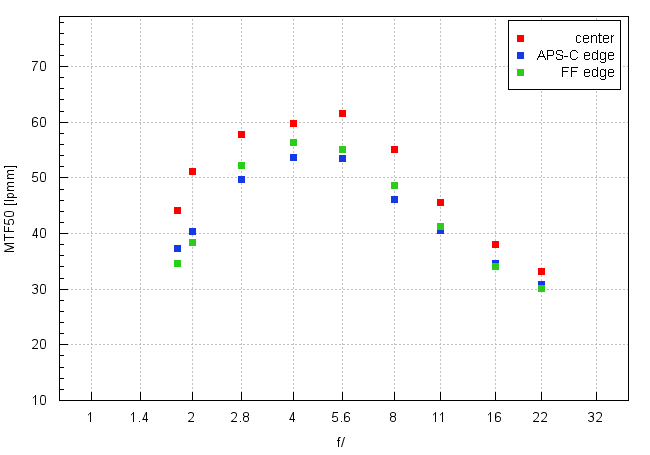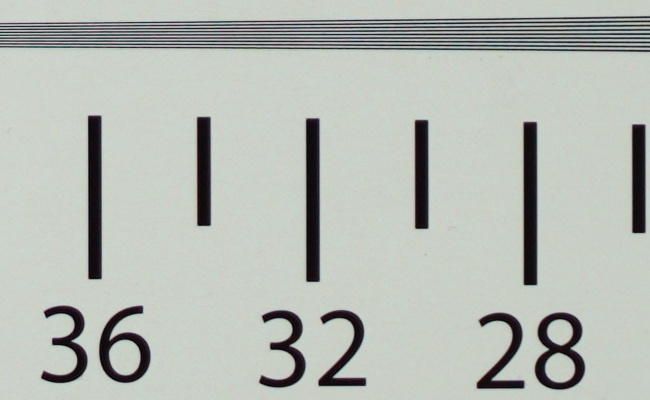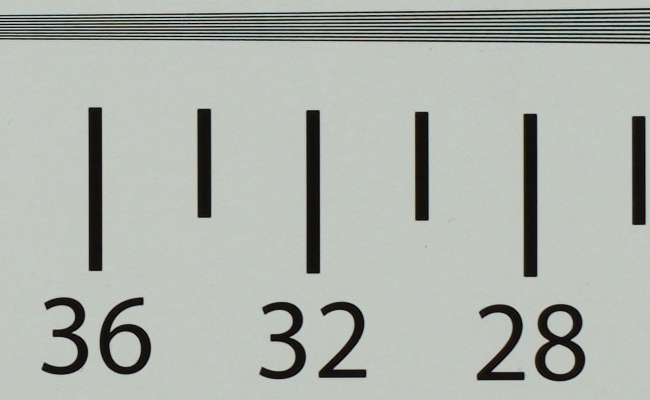Samyang AF 24 mm f/1.8 FE
4. Image resolution
Let's check how the Samyang AF 24 mm f/1.8 FE compares – a graph below presents its results in the frame centre, on the edge of the APS-C sensor, and on the edge of full frame.

Please Support UsIf you enjoy our reviews and articles, and you want us to continue our work please, support our website by donating through PayPal. The funds are going to be used for paying our editorial team, renting servers, and equipping our testing studio; only that way we will be able to continue providing you interesting content for free. |
- - - - - - - - - - - - - - - - - - - - - - - - - - - - - - - - - - - - - - - - - - - - - - - -
Looking at its performance in the frame centre it would be difficult to praise the lens. Don't get me wrong – the results aren't bad. Even at the maximum relative aperture the lens is able to exceed a level of 42 lpmm so images are completely useful. Unfortunately, the fact that the maximum results are barely higher than 60 lpmm is nothing to boast of. On the other hand this performance is still better than the performance of this lens's system brother, the Samyang AF 24 mm f/2.8 FE.
The only-average performance in the frame centre can be explained up to a point by the results you see on the edge. First, the edge values are just slightly lower than these from the centre of the frame. Second, MTFs reached on the edge of the smaller APS-C sensor are very similar to the MTFs presented on the edge of full frame; what's even more interesting, on stopping down the aperture the latter are a tad higher than the former. Why? A very specific graph of chromatic aberration is partially to blame (and we are going to say more about it in the next chapter), and then, most probably, a deliberate optics design. It seems the constructors decided to sacrifice several lines in the frame centre in order to get a very sensible performance across the frame and in a very large aperture range.
The result is such that on the edge of the frame images are not especially useful, with an exception of the area nearest to the maximum relative aperture. You start getting decent values from f/2.0-2.2 onwards and it concerns also the edge of full frame.
To sum up, the performance of the tested Samyang is perhaps not exactly impressing but it remains good enough to generate images of sensible quality across the frame in a very wide range of apertures. With an angle of view amounting to 84 degrees you can certainly call this kind of performance satisfactory.
At the end of this chapter, traditionally, we present crops taken from photos of our resolution testing chart, saved as JPEG along RAW files which were used for the analysis above.
| A7R III, JPEG, 24 mm, f/1.8 |
 |
| A7R III, JPEG, 24 mm, f/5.6 |
 |






